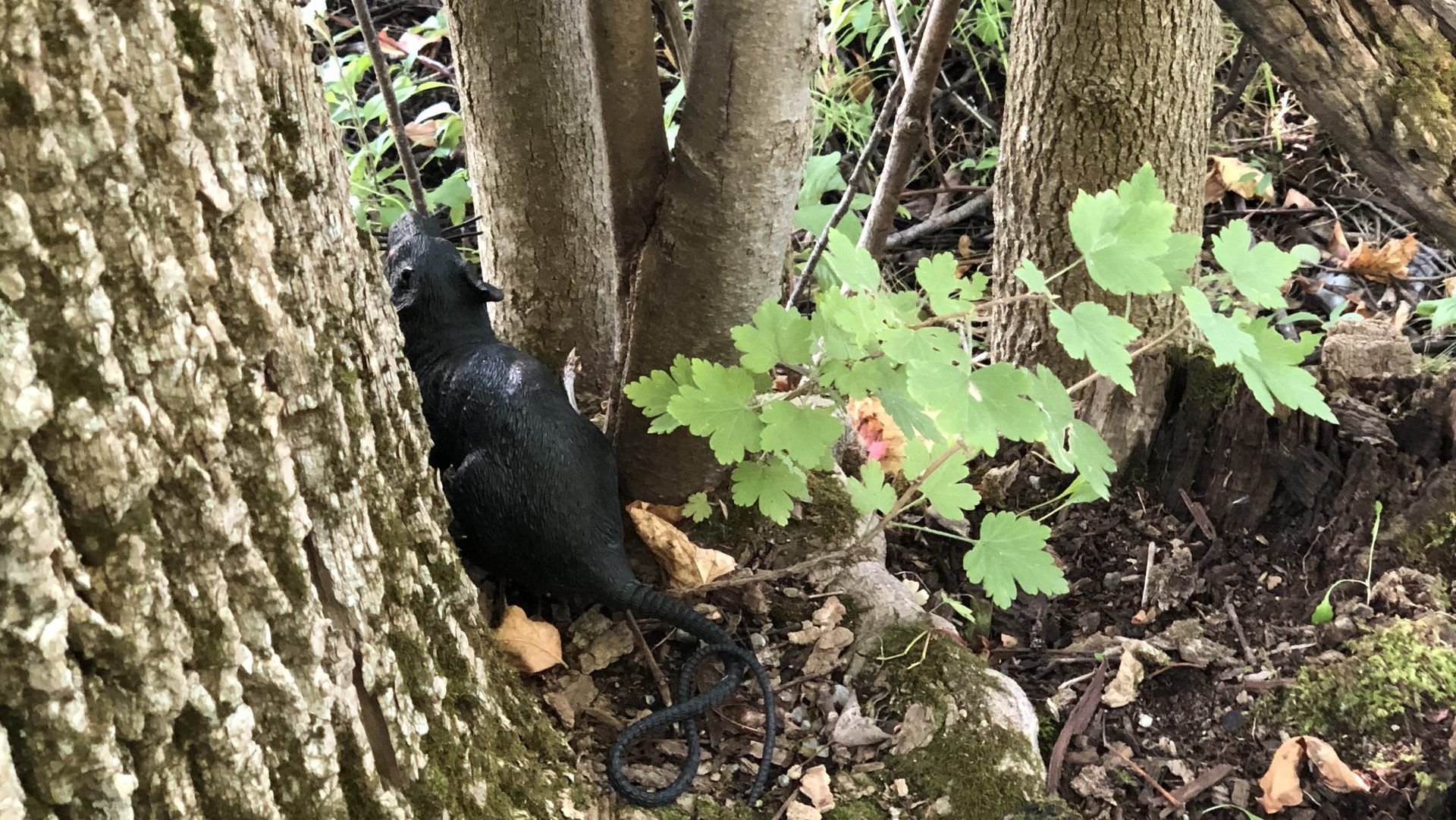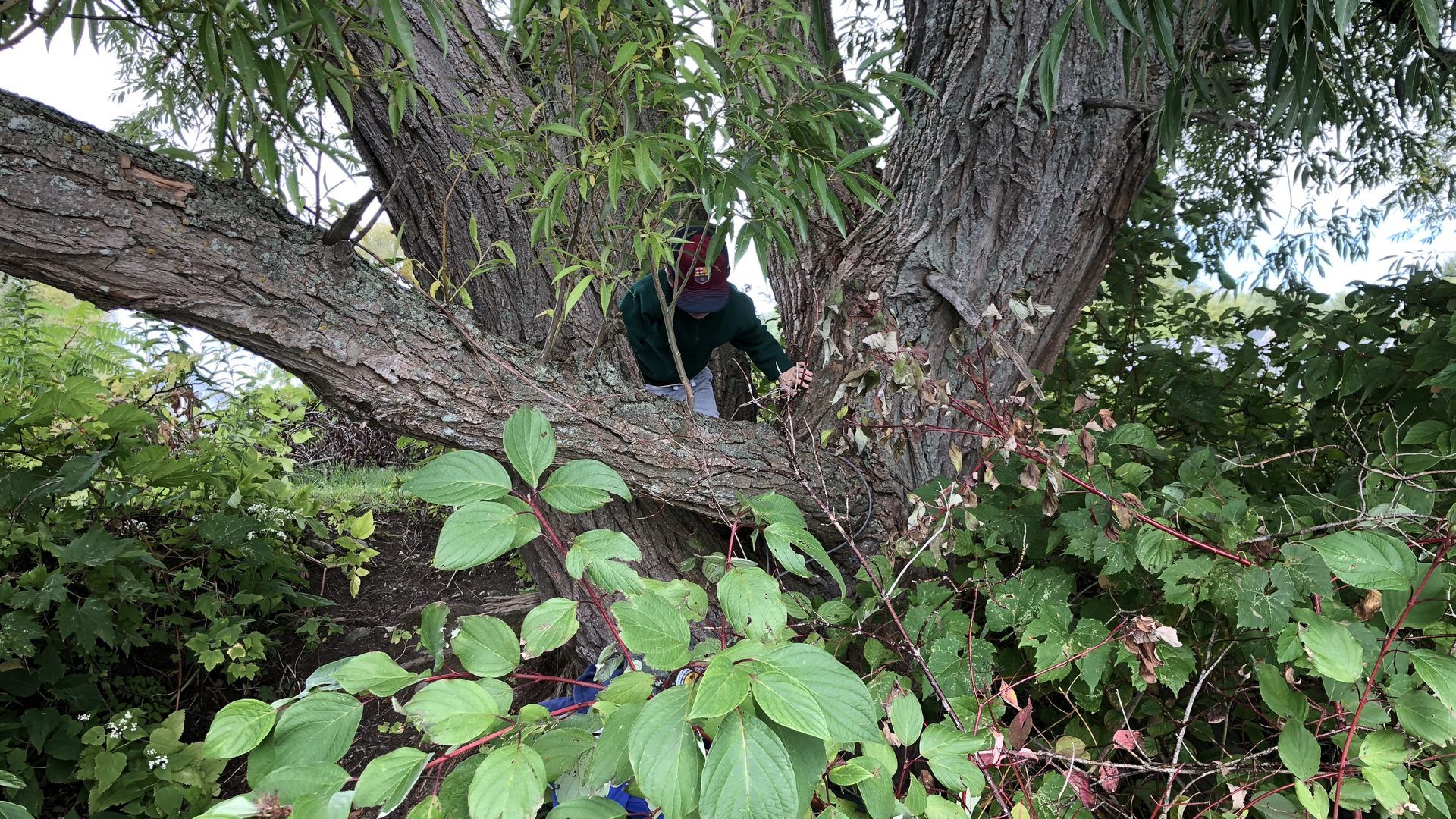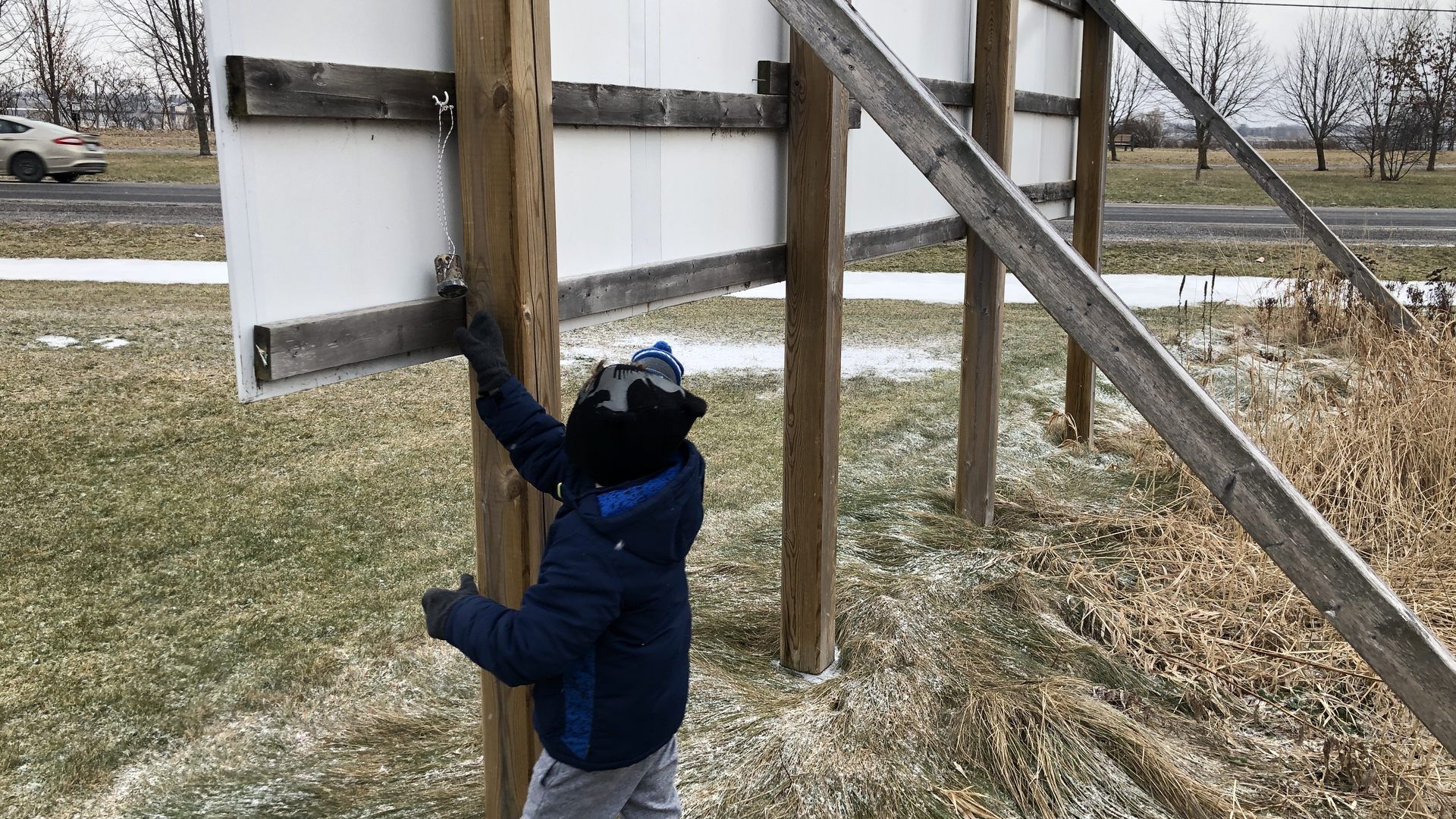Geocaching
GPS Assisted Treasure Hunting.

The premise of geocaching is using a GPS to find treasures hidden throughout the world. These hidden geocaches are placed by other geocachers in generally unique and interesting spots, who then upload the coordinates to the geocaching website so that others may search them out.
With the explosion of cell phones that include GPS, it's an activity accessible to almost everyone; however a phone that has the geocaching app isn't a strict requirement, it's possible to use a handheld GPS and the website to find geocaches as well.
Geocaches include a log book for you to sign when you successfully find it, and the website has a digital version where you can record your find, leave messages or upload pictures.

Geocaches come in many shapes and sizes, and many that are outside urban areas tend to be hidden in a creative container. Many of the containers will contain more than a log book, including small trinkets to trade for.
Geocaches may also have "trackables" in them which are specially crafted medallions, pins or other items that have a unique serial number. The idea is to move the trackable from one geocache to another while you're adventuring and then be able to see the history of where the trackable item has been.

Geocaches are meant to be hidden, so despite having coordinates to guide you to the location, a search at "ground zero" is still required. Hiding places may be fairly obvious, such as a nook of a tree, or require a little more thinking and observation in order to find.
Some geocaches include multiple parts, where you have to solve puzzles to find the "final" geocache, or may provide coordinates to point you to other locations which will eventually lead you to your goal.
The website provides a number of ratings for each geocache, including the general size of the geocache, difficulty of the terrain and the hiding spot, and how accessible it is, both for those with mobility issues and during different seasons. Geocaches you have found are marked with a happy face, so that you know you've already been there, and you can search by a number of criteria to help plan your next outing.

Geocaching is meant to get you outdoors and exploring, and when you start you'll be surprised at how many geocaches are located in areas you travel through regularly, without ever even noticing. Urban geocaching tends to involve the hiding and finding of miniscule containers in a variety of places like attached to park benches or under light standards in parking lots. Rural geocaching however tends to take you slightly off the beaten trail to more interesting locations that you may not have otherwise seen.
The geocaching community has a few guidelines to follow, such as respecting people's property and trying to avoid those not in the know ("muggles") finding out that a geocache is present. Because of it's popularity, some organizations or localities may have additional rules and guidelines for geocaching, such as those provided by Parks Canada for geocaching on their properties.
Because geocaching is getting about getting outside, there are regular "Cache In, Trash Out" events where picking up and removing garbage on your way to and from caches is treated as an additional goal and local groups of geocachers may organize other events throughout the year.
To learn more about geocaching, or to start playing, please visit the official website.